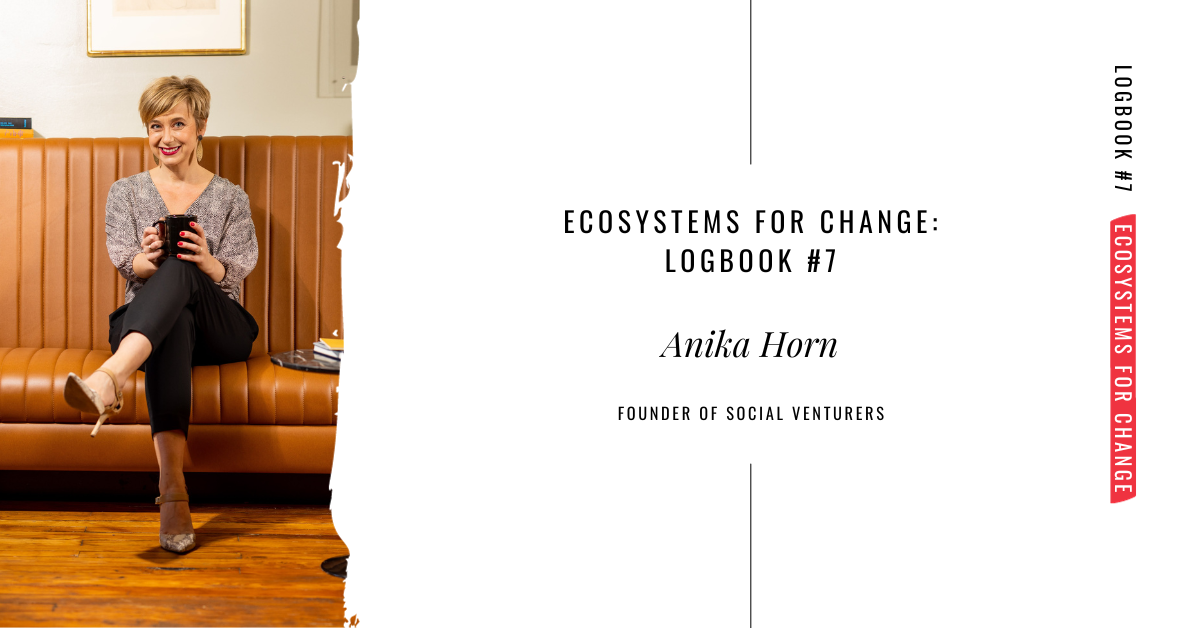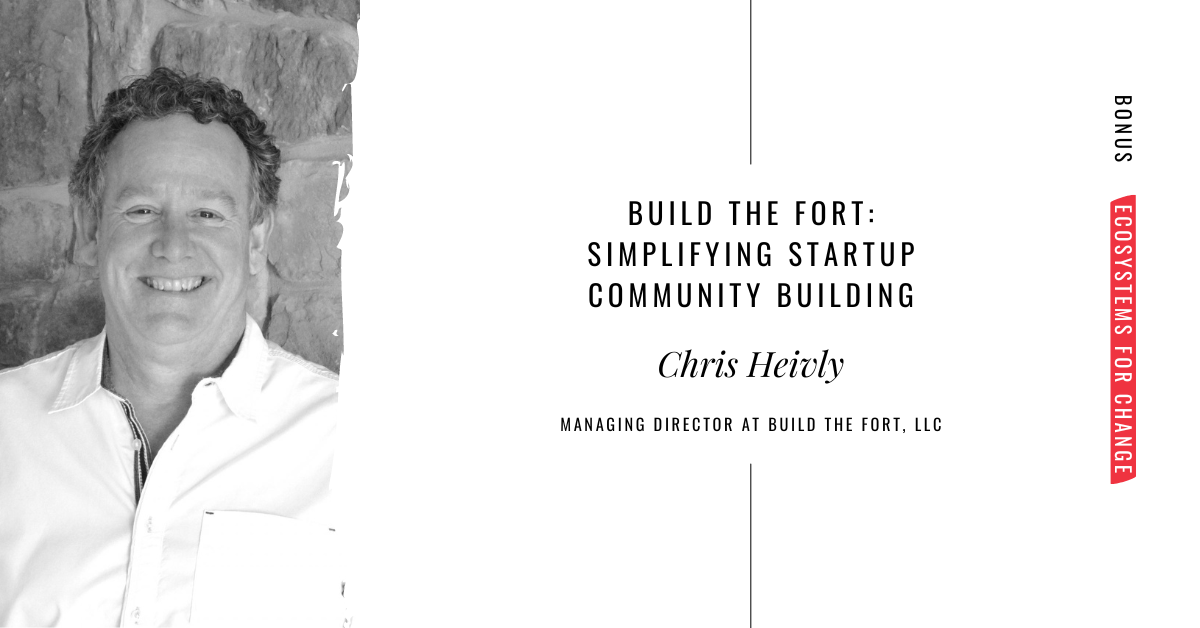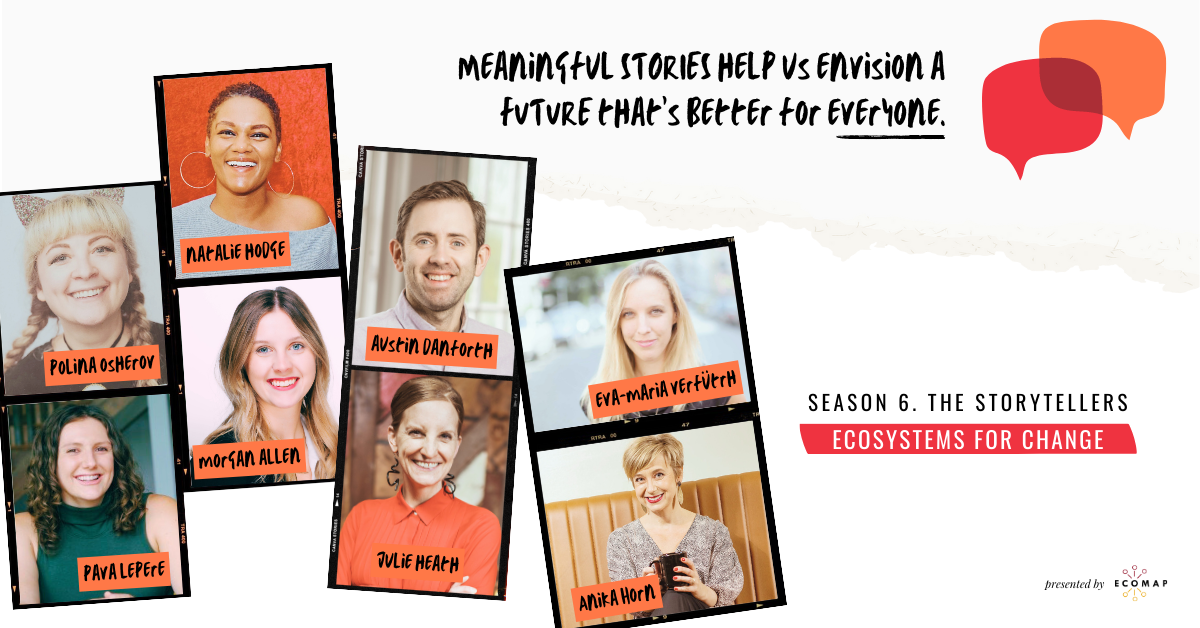Stories that redefine entrepreneurship in our communities
As an ecosystem builder in the Shenandoah Valley, I have been entrusted with telling the stories of local entrepreneurs and our ecosystem. In the summer of 2023, we launched our second storytelling campaign to shine a light on entrepreneurship in the Valley. I sourced and wrote the stories of seven entrepreneurs who either still run or launched a side hustle to start with. The idea behind this campaign is to highlight the side hustle as a pathway to entrepreneurship. More broadly, our goal was to show off these hardworking entrepreneurs who do really awesome stuff in our area. Our reason for telling these founder stories at all is to change the narrative about what it means to be an entrepreneur in a rural region of the US. Yes, we want to contribute to the national conversation about entrepreneurship in under-optimized geographies. But even more importantly, we want to hold up a mirror to these local dreamers and doers to remind them that their boldness and courage are not in vain. We want to raise awareness in the community about these unique businesses that make up main street, and we want to showcase the innovators who are tinkering in their garage or basement, building something cool right here in the Shenandoah Valley. I want to elevate their voices and shout their stories from the mountain tops to make sure that more and more people recognize the potential of entrepreneurship for our region. That’s what season 6 was all about. In this essay, I summarize some of the key insights from my conversations with my six guests.
We started this season by asking how we can tell better stories about what is happening in our ecosystems. As we established in episode 1,
Storytelling is not just some fun marketing campaign; it’s a tool to show the community what is possible and what the future might look like.
Just look at the Entrepreneurship Indiana Yearbook with profiles of entrepreneurs and accomplices from around the state of Indiana - link in shownotes of course - and you will see nothing but opportunity, different founders with different solutions to problems in their state and beyond. What we all have to remember is that most of us - especially entrepreneurs and other ecosystem partners - are so heads-down in the day-to-day that they rarely have the chance to look up and see the bigger picture of where the ecosystem is headed. Storytelling allows us to do just that. To gather and curate all these different stories, like pieces of a mosaic that might not impress anyone as an individual story - but create a beautiful picture as they come together.
Once you understand that each story told - be it on a blog, in a newsletter or Youtube - adds to this greater picture, or narrative, you can start chipping away at it. You don’t need a degree in journalism or media production to start contributing. What you DO need is a genuine sense of excitement about the entrepreneurs you encounter, and the willingness to look for solutions.
1. The types of stories we tell
Thanks to Peter Block, I knew that we become the stories we tell ourselves and others about our community. In fact, as Eva-Maria Verfuerth, editor in chief at Tea After Twelve, explained, talking about disaster and crisis leaves us feeling helpless. I think we can agree that that’s not a great starting point for driving progress and change. Focusing on solutions, on the other hand, can show us a way to move forward. And before you think it’s just a way to put a positive spin on a real problem, listen to what Eva had to say about solutions-based journalism and storytelling:
"We don't really report on positive news to be honest. We talk about solution-based journalism. We look out for solutions, but in order to need a solution, there is typically a problem. So while we put the solution first in the story, we then dive into the problem. A big part of the story is always the problem because in order to judge whether the solution is valuable or not, you need to understand the problem pretty well. You need to get to its roots." Eva-Maria Verfuerth
Here are two other things I took away from my conversation with Eva:
- You have to be factual and objective when reporting on the problem. Only if you explain the ins and outs of the issue at hand will your story do a good job of elucidating why this entrepreneur or that startup in your community is really moving the needle.
- Set clear parameters for when and how this solution can potentially work. We’re not in the business of selling silver-bullets. As you know by now, what works in one community may not work in another and as storytellers, we have a responsibility to clarify where the potential starts and ends.
If you do this well, however, your storytelling potential will skyrocket. Tea After Twelve told the story of an activist scientist who restored the wetlands in this community in Peru. Based on the article in Tea After Twelve, people from thirteen different countries reached out to learn more about his method so they could deploy this solution in their home countries. If this doesn’t showcase the power of storytelling, I don’t know what does.
"I want people to understand that when you shop small, it means something. Every dollar means something. It means a job. It means the ability to have a brick and mortar space. It's a utility bill. It's new inventory and equipment." Natalie Hodge
2. How to tell a good story
According to Eva, passion is key: You have to be passionate about the person or the mission of their initiative. Second: To tell a good story, take a step back and put yourself in the shoes of the audience. Obviously, you as an ecosystem builder are passionate and super excited about his startup or that innovation - but why should someone who rarely thinks about these things care What’s the essence of the story and how can you chisel out that hook to catch your audience’s attention? Eva’s recommendation:
Try to stay specific, talk about the facts, stick to the story itself and don’t exaggerate because if it's a story that's worth it, there's no need to put more into it than there actually is.
In episode 3, Natalie Hodge raised a great point: With the advent of social media and cell phone technology, most of us carry a mini production studio in our pockets at all times:
“I love the fact that the door is open and it's accessible to people because that allows for there to be a diverse range of representation, communities of color, any community really outside of traditional Hollywood, that did not have representation. Our phones and iPads and other devices, (you can even rent equipment from public libraries in some places),have opened the door for us all to have our faces and our stories out there. That's cool.”
This one made me think. Because not only have the technology and platforms made storytelling more accessible: We NEED more diverse storytellers because a greater variety of people means we’ll also get a greater variety of perspectives and stories that are being told. And if we want to show the many different angles in our community, we need stories to be told by different people about different issues. Note to self, we need more storytellers from all walks of life.
Another nugget that I found in several conversations throughout this season was the importance of developing not only great content and telling a meaningful story - but to support that story with strong visuals, be it photography, designs or video. You know the old adage that a picture is worth a thousand words.
Take it to heart. I’ve been fortunate to work with some incredibly talented photographers over the years and I can only recommend that you do the same when you get the chance. Adding imagery to any story will not only bring the story to live but it shines a professional light on a community. In many cases, this makes the audience proud - it allows them to share how they view their community with others - and it makes it more likely that they’ll share it with their family, friends and networks.
Which brings us to insight number 3:
3. Sharing your stories with the world, OR, distribution
One of my greatest challenges both here in the Shenandoah Valley and with this podcast is how to get the word out.
"Having great content alone is not enough, you need to find a way to get it out there so that the right people find it and can consume and - hopefully - share it." Anika Horn
Eva and her team at Tea After Twelve rely on their partner networks to source stories in the beginning and to then share their latest issue with those partners in different parts of the world to get the word out.
Personally, I love the way that Pattern and the Indiana Economic Development Corporation get their Entrepreneurship Yearbook into the hands of hoosiers: As Morgan explained in episodes four and five, step one is handing them out to anyone and everyone:
“Over the course of four months we distributed 3,000 copies of the Yearbook: During launch parties during Global Entrepreneurship Week, community events and handing people who showed interest a box of Yearbooks. Since that initial order, we had 2,000 more copies printed because there's power in that physical coffee table magazine. [...]
We hosted three launch parties during Global Entrepreneurship Week: In North, Central and South Indiana respectively. They were - intentionally - not stuffy. We wanted these events to be approachable and fun. After all, we wanted to celebrate the founders. One of my favorite experiences of the launch party was when founders took their yearbook and they went around to show people their stories. Some people came up to the entrepreneurs and said, ‘Hey, you're in the yearbook. Will you sign your story?’ Just like a traditional high school yearbook, people were signing their stories. People don't need to listen to a panel. We want those natural connections to happen in the room.” Morgan Allen
4. How to finance your storytelling
The formats we heard about in this season were
- An online only magazine
- A Youtube tv series
- A printed coffee table yearbook that’s also accessible online
- A limited video series featuring different rural communities, and
- Written case studies
Obviously, all of these come with a different production value and - therefore - price point. I loved learning from all six guests how they finance their storytelling efforts. Tea After Twelve is subsidized through much of the team’s client work in storytelling and media production. Hometown Hustle is typically financed through different community stakeholders including economic developers and corporations. The Entrepreneurship Indiana Yearbook is a line item in the IECD’s annual budget. Kudos to the Indiana Economic Development Corporation for contracting a local nonprofit that is advancing the creative economy. Pattern does not only work with local artists and talent but actively trains the next generation of storytellers. This is the way it should be done folks!
The rural edge video series that the Center on Rural Innovation produces as a nonprofit themselves is - as Austin says- a line item in their annual budget.
“For us as a non-profit the funding for our storytelling efforts comes from large-scale philanthropy. In our communications budget, it’s the biggest non-personnel expense. But obviously you can’t do storytelling without personnel so you have to layer that on top.” Austin Danforth
5. Advice for emerging storytellers
If you enjoyed this season and are ready to roll up your sleeves to tell the stories about changemakers in your community, here are a few pieces of advice to get you started: First, let’s review what we heard from Julie Heath in episodes 4 and 5:
“My advice: Start making something. Then let people react. Many people can't envision the value until it is in their hands, until they experience it, and then be open to the action inspired people take. I'll give you a concrete example: The first weekend we received these yearbooks off the printer, we ran a program with our high school entrepreneurship program. A senator attended. He flipped through this yearbook and said, ‘Oh my goodness!’ He really was positively impacted and inspired by this publication, and he then said, ‘What our state needs is an entrepreneurship caucus!’ People will take action as a result of inspiration and optimism. Just get ready for the ride.” Julie Heath
Polina Osherov pointed out that you don’t have to be able to do everything. Find good people in your corner who can help you do it.
No better example for this type of collaboration than Polina, Megan and Julie.
Both Eva and Austin pointed out that in order to connect with the public, it’s not enough to find a cool story that you think is relevant. You actually need to zoom out and get some perspective to figure out why this might matter to someone who isn’t an expert in this area - pull in statistics or a current development that showcases the story’s relevance to the public. That way, your story is more likely to resonate with them.
The role of storytelling in ecosystem building
In each conversation this season we took a different perspective for why storytelling matters. It allows us to shine a light on solutions and - hopefully - inspire others to test similar approaches in their community.
Storytelling is a great way to celebrate the dreamers and doers, tinkerers and builders where you live. It gives you a platform, such as Hometown Hustle, to tell your community about all the great startups and small businesses that are investing their sweat, blood and tears to create goods and services that make your town, city or state a better place to live, work and play.
Storytelling makes the intangible tangible: Profiling over 100 entrepreneurs and entrepreneurial supporters, and then putting that coffee table book or magazine in the hands of policy makers can help get their attention and help them understand WHY investing in entrepreneurship matters.
Lastly, intentional storytelling helps us change how people view themselves and their communities. As Austin Danforth said in episode 6:
“There's a narrative about rural America that needs to change for people to see rural America as a place of tech-based opportunity where innovation can happen.” Austin Danforth
I’d venture to say that this is not only true for rural America but for many of our communities that are in peril, but that are also so much more than a sum of their shortcomings. Telling meaningful stories allows us to highlight issues and showcase all the great stuff happening DESPITE these issues. As Eva-Maria Verfuerth said in episode 2:
“I think a good story that apart from conveying information and facts, is a story that is meaningful and that has a message to convey. And that will make people who have read, seen or listened to the story, think differently about the topic, or give them the chance to think differently about things they've been reflecting on.” Eva-Maria Verfuerth
Browse episodes
Ecosystems For Change: Logbook #7
This logbook is a fun way for me to let you in on my thought processes and an invitation for you to contribute your own thoughts and experiences that make this show what it is.
Read MoreBuild the Fort: Simplifying Startup Community Building with Chris Heivly
I’m talking to Chris Heivly about why he wants to see more ecosystem and community builders come together and build a fort.
Read MoreS06E07: What We Learned: Stories That Redefine Entrepreneurship In Our Communities
As I reflect on the season, the key piece is that storytelling is not just some fun marketing campaign; it’s a tool to show the community what is possible.
Read MoreS06E06: Stories of Tech and Innovation in Rural America with Austin Danforth
We’re headed to Vermont to meet Austin Danforth of the Center on Rural Innovation, who tells stories about extraordinary rural communities throughout the US.
Read More


